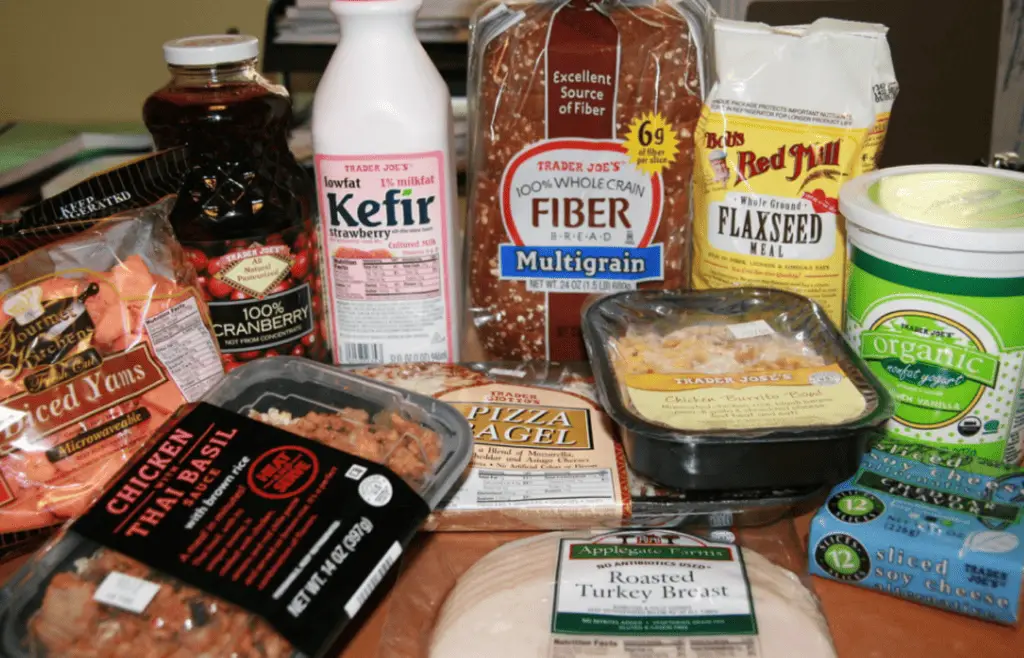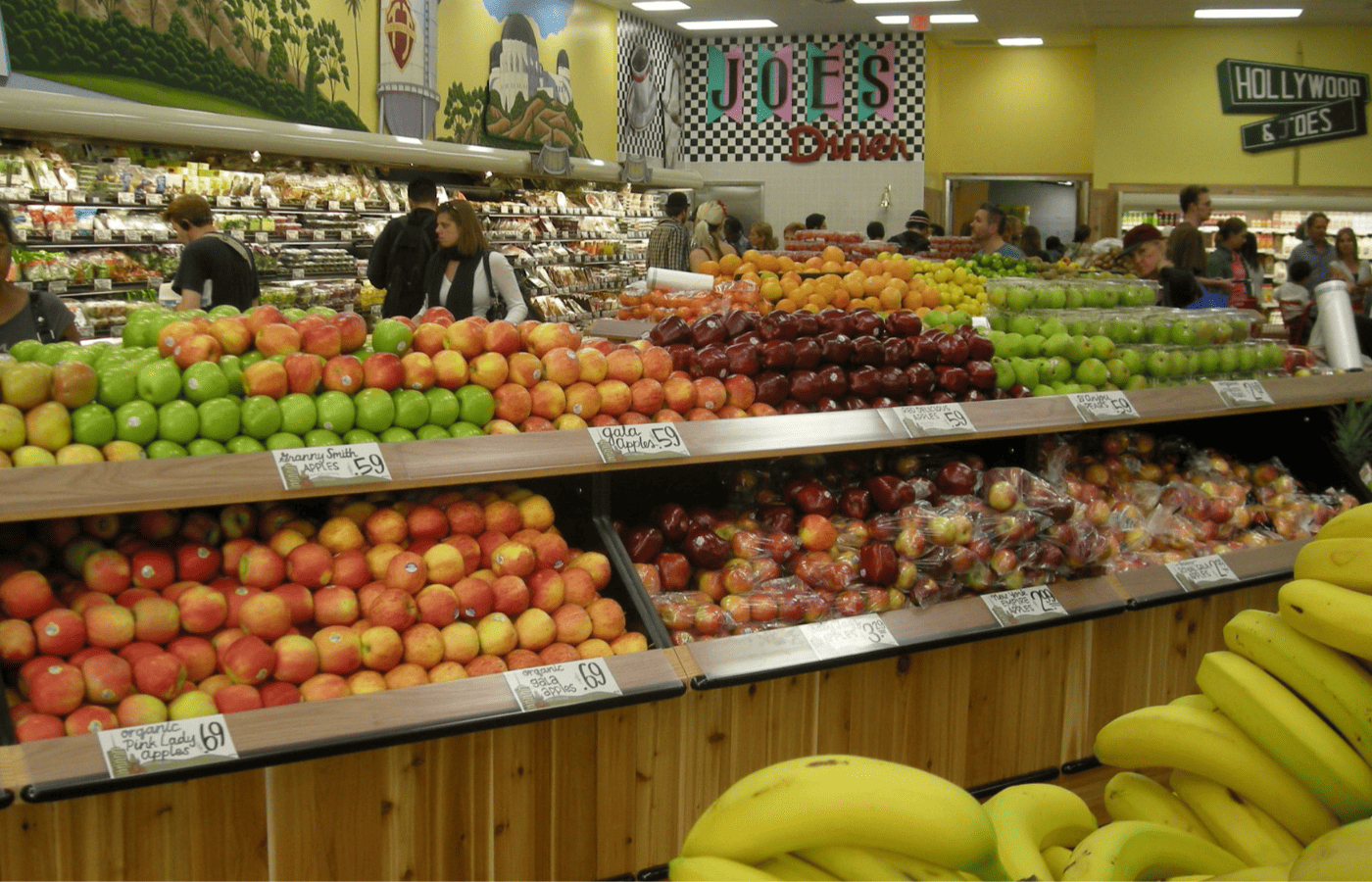Trader Joe’s isn’t like other major grocery stores. If you head in there, you aren’t going to see a multitude of different products. Trader Joe’s is very selective about what it keeps in stock, and almost everything is own-brand. You’ll also notice that the store doesn’t have a warehouse out back too. Whatever is in stock is on the shelves. So, this may leave you wondering ‘How does Trader Joe’s keep their merchandise fresh?’.
Trader Joe’s uses a variety of techniques to keep their merchandise fresh. Most of it revolves around their Just-in-Time inventory system. Products are delivered to the store when needed. It doesn’t get stored for long periods of time, and Trader Joe’s sells out of their products very quickly.
Let’s explain how this all works, shall we?
Supply Chain Management
When stocking products, Trader Joe’s focuses heavily on choosing the right suppliers for their products. They want suppliers that can:
1. Deliver products quickly
2. Can deal with the quantity of products that Trader Joe’s needs.
You’ll often find that many of the suppliers that Trader Joe’s works with are tiny suppliers. Ones that many of the larger grocery stores steer clear of.
This ensures that Trader Joe’s is always a priority and gets instant access to products. If the supplier doesn’t meet their needs, Trader Joe’s drops them.
Secondly, Trader Joe’s ensures that it only ever orders products that it knows it can sell. It doesn’t order tons and tons of products that it knows it will just throw away (this costs money, and is a complete waste).
This is while you’ll often see some products sit out of stock at Trader Joe’s. They’d rather not have some products on the shelf for small periods of time than to have a lot of spoilage.
Finally, Trader Joe’s uses a Just-in-Time inventory system. If you go to Trader Joe’s, you’ll notice they have no warehouses.
Instead, the items are taken straight off the delivery truck and put in the stores. Trader Joe’s gets daily deliveries, and they only ever receive what they know they can likely sell.
Product Selection and Rotation

Anybody that knows Trader Joe’s will know that the company rotates products out often. This not only helps to maintain customer interest but also guarantees the freshness of their products.
Because Trader Joe’s doesn’t stock ‘options’ on the shelves, it becomes easier to shift products. For example, if you went to Walmart, you may see 10 different types of coffee.
Trader Joe’s may just sell 1. So, if somebody needs coffee, they just buy that one option. You don’t have unwanted options sitting on the shelf, expiring.
As we said, Trader Joe’s isn’t opposed to offering a smaller quantity of products than their rivals too. The product selection at Trader Joe’s is highly curated.
Unique products that you can’t find anywhere else. People go to Trader Joe’s for these, and they sell out quickly. This means they always have fresh products on the shelf.
Products are rotated quickly too. If there is a product that Trader Joe’s wants to get rid of, it will be promoted heavily. They use the First-in, First-Out method for this. It means that any products close to losing their freshness are almost guaranteed to be sold.
If you’re in Trader Joe’s when products are about to expire, then you’ll probably find some great discounts.
Finally, they offer a lot of seasonal products i.e. ones they know will sell well and very quickly at certain times of the year. They’ll then ditch these products at other times of the year because they are slow sellers.
Store Layout and Design

Even the store layout plays a role in keeping products fresh.
All Trader Joe’s stores are temperature and humidity controlled. If you walk into Trader Joe’s, you may notice that certain sections of the store are different temperatures. This is important. It ensures that the right temperature is used to ensure products stay fresh for as long as possible. The company uses a lot of HVAC systems for this.
They have also invested heavily in proper fridges (that aim to be as green as possible), and storage for the more perishable items. Again, temperature controlled. This allows the maximum life for them.
You may also notice that the position of the freezers/fridges are roughly the same at Trader Joe’s stores. They’ll often be near the checkout. This means two things:
1. People are less likely to walk around with frozen/refrigerated items for long periods of time, preserving their freshness.
2. People are more likely to buy items when they are heading to the checkout, ensuring the products don’t stick around for too long.
Trader Joe’s has also claimed that their horizontal freezers help with sales. They are much more convenient to access, and this means more purchases and fresher frozen products.
Packaging and Handling
A lot of Trader Joe’s focus on their packaging has been from a sustainability standpoint. They are ditching plastics and non-recyclable materials. However, they also give some thought to preserving product freshness too.
For example, you may notice that they have removed the mesh from their produce packaging and gone for other options. This is not only good from a sustainability perspective, but it also reduces exposure to the air, keeping that produce fresher for longer.
They have tried to minimize waste from all of their product packaging too. Again, not just great for sustainability, but packaging things in cardboard, fiber trays, etc. has helped from a freshness perspective.
Their staff are also fully-trained to:
1. Handle food items correctly, particularly fruits & vegetables. This reduces the chance of products becoming damaged, keeping them fresher for longer.
2. Their entire stocking system has been designed to reduce cross-contamination.
Quality Control Measures
Sure, Trader Joe’s doesn’t have a huge number of staff in their stores, but they go to great lengths to ensure that they always have enough to monitor their products.
You’ll almost constantly find somebody walking around checking any products for spoilage or damage. If they are found, they’ll be promptly removed from the shelves. This is why you’ll rarely find ‘expired’ products on their shelves.
If certain products seem to have constant issues, then Trader Joe’s will chat with their suppliers. They’ll listen to customer feedback and let their suppliers know that the products are not staying as fresh as expected. They’ll either work with the supplier to correct the issue or completely ditch the supplier.
Customer Engagement
Trader Joe’s only wants to sell products that it knows will leave its shelves quickly. As a result, they’ll constantly introduce ‘test’ products into their range. They’ll gauge customer interest, and work out whether it should be a proper addition to their stores.
Trader Joe’s has built its entire business around offering unique products. As a result, they’ll frequently encourage customers to try out products they otherwise wouldn’t try out.
In fact, ask a staff member what their favorite product is. Chances are, they’ll tell you it is one of the newer product lines!
Trader Joe’s also likes to remind their customers how fresh their products are. Walk around the store, and you’ll see constant reminders of the freshness (e.g. on labels and advertising). You’ll also find ample information on product packaging that will tell you how to keep the product fresh for as long as possible.
Sustainability
Unfortunately, not all products in Trader Joe’s will sell. Thankfully, it doesn’t just get thrown away.
Trader Joe’s maintains connections with food banks, and all products that have reached their ‘sell by’ date are donated (these are not expired products!)
Trader Joe’s also gives their employees a 20% discount in the hope that they buy a lot of product when it is about to be removed from the shelves (i.e. when it is discounted).
Once again, Trader Joe’s is committed to environmental sustainability. All of their stores have been designed with green-friendly materials, energy-efficient lighting, and CO2-based refrigeration (better for the environment). Their product packaging is almost always something that recycles well, can be composted, or will break down quickly in a landfill.
Final Thoughts
Trader Joe’s works hard to guarantee product freshness. This includes using a Just-in-Time delivery system so products are only delivered to stores when needed, keeping a limited range of products in stock, and donating any products that may be past their ‘sell by’ date.
Trader Joe’s is one of the best grocery stores for freshness management, and it will likely continue to be so. We can never see Walmart, etc. using the same sort of techniques that Trader Joe’s does (since Walmart likes product selection), but they can still learn from Trader Joe’s in other ways.
For example, limiting the number of products ordered at once, limiting products kept in the warehouse, or changing product packaging to encourage freshness.

